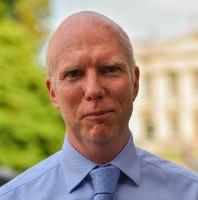Blog
Unless otherwise stated, content is shared under CC-BY-NC Licence
How to sell an archive
Alistair Goodall is Head of IT for Crossrail Ltd in the UK
Last year we were the proud winners of a Digital Preservation Award for our Crossrail archive and I was lucky enough to experience the passion and enthusiasm for digital preservation at the awards ceremony.
Since then we have successfully closed down some of the applications associated with the early stages of our 10 year project (such as land acquisition and property access requests) and these are now available through our Crossrail archive. The Crossrail project itself has, however, been delayed beyond December 2018 and we are in our most information intensive stage with testing, commissioning and certification underway.
Sharing format preservation information and how this will benefit us all
Jon Tilbury is CTO of Preservica, and is based in the UK
World Digital Preservation Day is all about the global community coming together to share ideas and collaborate. So how can we all work more closely on sharing format preservation information and what is the value of doing this?
Email Monkey Magic
Matthew Addis is Co-Founder and CTO of Arkivum based in the UK.
Email Monkey Magic
Email preservation is one of those areas that covers almost every digital preservation issue in the book. This blog post describes my journey into the world of email preservation - what I learnt, what I did, and what we've now built into Arkivum's Perpetua solution. To be honest, it did at times it feel more like the trials of Monkey in Journey to the West but I got to do some cool email magic on the way!
Augmenting the community, lowering the risk internationally
Antonio G. Martinez is CEO & Founder of LIBNOVA and is based in Madrid, Spain
Last year in our guest blog post for the DPC we wrote about “Do you D.P.?” and we commented that there is no “DP yes or no, but, up to what level of DP can you go?”. This year the theme for World Digital Preservation Day is ‘At-Risk Digital Materials´.
As we mentioned last year, it was the less D.P. intense communities that were picking up the tune of the more energetic entities, at many levels. Over the last few years we have been sensing that the ‘At-Risk Digital Materials’ menace is being taken very seriously indeed by big and small cultural heritage institutions across the globe and that those international entities are picking up speed by their own accord. Many of these international entities are turning to other older and established associations to contrast their fears concerning digital preservation. They realise they are not alone on many issues; it is quite an international concern. And this takes me to another point.
Deep Enough For Sharks
Sean Barker is an Information Management Specialist
I have an embarrassing admission to make. For years, part of me worked on the LOTAR project (1) developing preservation standards for Product Data Management (PDM), while another part was making those standards obsolete by creating an Integrated Design Environment. And I didn't connect the two parts together.
The first thing I should do is not explain PDM - it's too complex for a short blog and people shouldn't worry about it unless their project gets bigger than a team-of-teams (about eighty people). Think of PDM as provenance on steroids, where even a simple sign-off is backed up by a ten-volume procedures manual and where the people who sign the approvals must be approved to do so by an approved organization.
From ‘starting digital preservation’ to ‘business as usual’
Anna McNally is Senior Archivist at University of Westminster in the UK
The University of Westminster’s Records and Archives team manage the institutional records of the University (founded in 1838), alongside the deposited records of several architects and town planners, and a garment collection (the Westminster Menswear Archive). We started actively managing digital records in 2016 but, in a relatively fast-paced area (compared with paper records!), it’s hard not to always think of yourself as a beginner. In 2017 we recorded a webinar titled ‘Work In Progress’, which - despite having been in production for nearly 3 years now - is still how I would describe our digital preservation activities. While our software solution gives us confidence that we are meeting our targets with the NDSA levels, we’re aware that there is a lot more we could be doing.
What can our memory institutions teach us about fake news?
Dr David Tarrant is the senior learning advisor at the Open Data Institute (ODI).
I would first like to thank the work of the BBC for the research behind this article that was broadcast in “Ian Hislop’s Fake News: A True History”. I have added to the story with details not included in the programme and checked these using a combination of sources.
So what can our memory institutions teach us about fake news?
Digitally Designed: Digital Preservation of Architectural records
Adrian Steel is Director of Collections and Programmes at the Royal Institute for British Architects in the UK
Architects have used digital technology to aid design for several decades. The RIBA Collections – which comprise over 4 million items altogether – include the records of Colin St John Wilson and Partners, the architectural practice responsible for the British Library. The British Library was one of the earliest projects to benefit from computer-aided design, and among the surviving records are computer tapes and printouts relating to this pioneering use of technology.
It’s just not always a clear cut: Digital, analog and everything in between.
Brecht Declercq is Digitisation and Acquisition Manager for VIAA in Belgium
At first glance, there is a strict distinction between carriers of analogue and digital audiovisual information. But in practice, this distinction is not always clear. There are even carriers of audiovisual information that can hardly be catalogued under one of those two names. The word ‘digitisation’ is therefore not always used correctly. Moreover, there is an important difference between digital information, file-based information, and information stored on mass storage systems. By taking a closer look at the history of digital information storage, it becomes clear that the world has not made the switch overnight. There are decisive inventions, but more often even very long-term evolutions. Both inventions and evolutions, of which the importance is almost forgotten, even prove to be essential for understanding where we have arrived today, and how we can preserve any audiovisual information.
Digitisation and long-term preservation of sound and audiovisual materials at the BNE
Mar Pérez Morillo is Director of Digital Services and Processes at the National Library of Spain
 The National Library of Spain has been digitising its collections since the end of the twentieth century. It launched its digital library in 2007 (for the periodicals) and in 2008 (for the rest of the documents (printed books, manuscripts, incunabula, engravings, maps, music scores, photographs, drawings, etc.). Nowadays the digitised collection comprises more than 2.300 titles of periodicals and more than 220.000 for the rest of the formats, most of them publicly available on the BNE website.
The National Library of Spain has been digitising its collections since the end of the twentieth century. It launched its digital library in 2007 (for the periodicals) and in 2008 (for the rest of the documents (printed books, manuscripts, incunabula, engravings, maps, music scores, photographs, drawings, etc.). Nowadays the digitised collection comprises more than 2.300 titles of periodicals and more than 220.000 for the rest of the formats, most of them publicly available on the BNE website.









































































































































Read more...